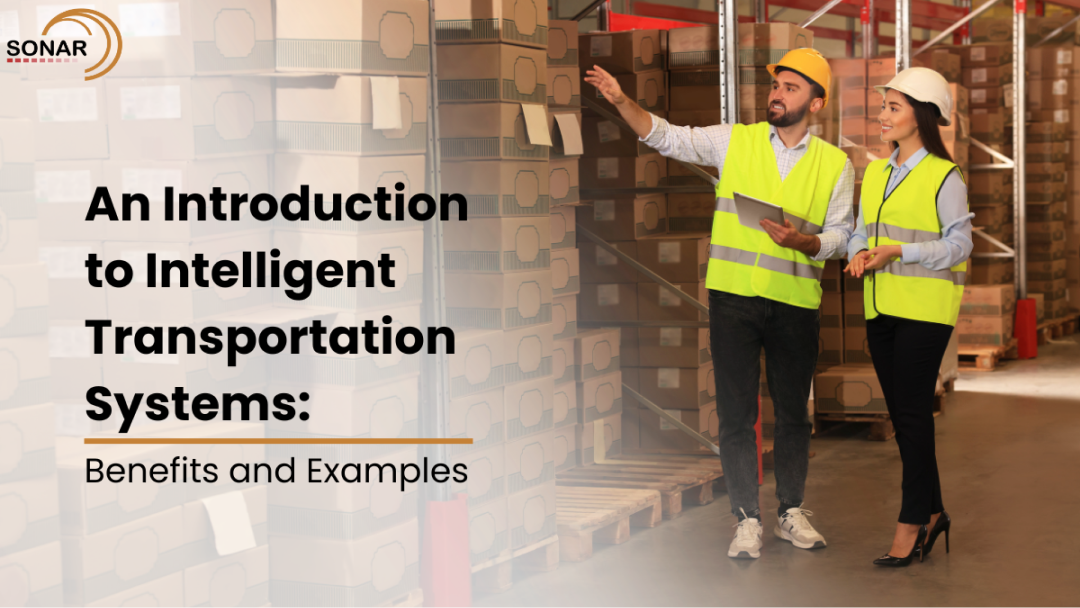City planners and officials are continuously searching for methods to better manage these societies with the aid of new and emerging technology as more cities enter the era of digitization. This is especially true in the case of transportation, which is why intelligent transportation systems are becoming an essential component of all smart cities under development. These systems are not only incredibly versatile, but their employment is no longer restricted to traffic control. They offer an intelligent substitute for conventional transportation systems, offering the best smart transport logistics solutions that are more effective, secure, and safe, in addition to resolving typical transit problems like traffic.
Utilizing this kind of technology is thought to be essential for attaining effective urban transportation, which is why so many nations have started using it or plan to do so soon. Let’s learn the Intelligent Transport Systems definition, operation, and potential applications to enhance transportation networks.
Intelligent transportation systems (ITS) are an Internet of Things component that integrates vehicle-to-vehicle (V2V) and vehicle-to-infrastructure (V2I) technologies with wireless and wireline communications-based data and electronics. ITS systems are primarily utilized in transportation and traffic management systems to improve the safety, efficiency, and long-term viability of various transportation networks, as well as to minimize traffic congestion and improve the user experience; thus, they are the best smart transport logistics solutions.
ITS is already making a considerable impact on the transportation industry, with applications such as electronic toll collection, ramp metres, traffic light cameras, traffic signal coordination, transit signal priority, and passenger information systems. Implementing these systems has many benefits for the public and commercial customers, including reduced environmental impact and economic gain.
The Benefits of Intelligent Transportation Systems
1. Improved Accident Management
When a car accident occurs, it may identify the location of the incident and send quick alerts to other vehicles nearby. This could reduce the number of follow-up accidents by improving emergency response times.
It is sensible to set up ITS for these reasons, given that traffic accidents are the leading cause of mortality worldwide. The World Health Organisation (WHO) estimates that automotive accidents kill 1.3 million people and injure 50 million more each year.
The best smart transport logistics solutions have the potential to save many lives by speeding up and streamlining response operations, reducing fatalities, and enhancing long-term road safety.
2. Enhanced Traffic Management and Control
Intelligent transportation systems capture a variety of data from cars and infrastructure. This data is then analyzed and used to optimize flow capacity and efficiency. This function is particularly useful for enterprises where even minor delays can be costly.
For example, if sensors detect an overload further down a highway, incoming vehicles can be diverted to reduce influx and help clear the bottleneck sooner. The system is adaptable, which means it can quickly respond to variations in traffic flow.
3. Reduce Air and Noise Pollution, Transportation Congestion, and Energy Usage.
This is especially used during heavy stop-and-go traffic. The device determines whether there is adequate distance between vehicles to maintain a consistent speed, reducing fuel usage and emissions. If there isn’t, it follows the regulatory procedures, making ITS among the best smart transport logistics solutions.
4. Providing Real-Time Traffic Updates.
Another characteristic of this system is its capacity to offer drivers precise and timely information on traffic conditions and potential road hazards (such as barricades). The technology also allows authorities to notify travelers of any changes or disruptions that may affect their routes.
Examples of Intelligent Transportation Systems
1. Electronic Toll Collection:
- Automates toll payments at key locations, decreasing traffic and driver stops.
2. V2X Communication:
- Enables vehicles to communicate with one another and collect data about the surrounding infrastructure.
- Enhances road safety, saves energy, and handles traffic effectively.
3. Intelligent traffic management:
- Effective traffic management relies on predictive analytics and a linked infrastructure.
4. Electric vehicle charging:
- Roadside charging stations for electric vehicles, some of which have cellular capabilities, smart metering, and network access.
5. AI-Powered Fleet Management:
- Integrates digital technologies to optimize fleet operations by providing driver behavior, critical, real-time, anti-theft, and safety alerts.
Conclusion
Intelligent Transportation Systems (ITS) are increasingly important components of smart cities, providing greater efficiency, security, and safety than traditional transportation systems. These systems combine vehicle-to-vehicle and vehicle-to-infrastructure technologies with wireless and wireline communication-based data and electronics. They increase the safety, efficiency, and long-term viability of transportation networks, reduce traffic congestion, and improve the user experience.
Benefits of using the best smart transport logistics solutions include better accident management, better traffic management, less air and noise pollution, and real-time traffic information. ITS applications include electronic toll collection, V2X communication, intelligent traffic control, electric vehicle charging, and AI-powered fleet management. Implementing these systems provides several benefits to both public and commercial clients, including reduced environmental impact and economic gain.

